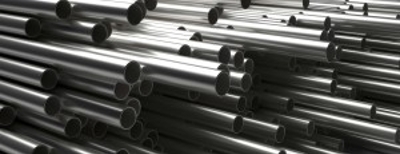How manufacturing and recycling of aluminium can be improved
Studying the formation of micro-crystals under a magnetic field has opened up ways to enhance the manufacturing and recycling of aluminium alloys. Idha Valeur talks to the researchers behind the discovery.

A new technique to remove iron contamination from recycled aluminium alloys is being put forward by a team at the University of Birmingham, UK. It was achieved when Dr Biao Cai from the University recorded how micro-crystals within the material cool and solidify using a high-speed X-ray imaging tool. His collaborator, Dr Andrew Kao from the University of Greenwich, UK, then created a mathematical model to predict the micro-crystals’ formation and what shape they would be in.
Cai shares that they have discovered that magnetic fields can control the flow of liquid metals, which leads to serious segregation, screw-like structure and fine crystals. ‘In my work, I applied a magnetic field to control melt flow of an iron-containing aluminium alloy during solidification and found out that iron distribution on both macro- and micro-scale can be controlled. The governing force is the induced Lorentz force, which drives the flow of iron impurity in molten aluminium alloys. This inspired me to develop a technique to remove iron contamination from recycled aluminium alloys.’
He explains that removing iron from these molten alloys is important as it is ‘normally detrimental to aluminium alloys’ and will lead to the formation of intermetallic. In addition, iron is concentrated with successive recyclings, he says, so it will make the recycled material brittle and therefore hinder its use in premium applications such as in aircrafts. He also adds that current methods of removing iron during the recycling process are either expensive or inefficient.
‘What we are interested in is the underlying physics, how the solidifying liquid metal interacts with imposed magnetic fields. To do this, we used two advanced methods. One is high speed synchrotron X-ray tomography, which can capture 3D images in seconds…Using this, we directly visualise what happens at the interface of solid and molten alloys as they cool and solidify with and without magnetic fields,’ Cai says. ‘The second is a computational model that learned all the physics and runs on high-performance computer clusters, which allows us to look into the same phenomenon in the virtual world.
‘If controlled properly, I believe we can produce favourable microstructure and hence lighter and stronger materials. I am now interested in using this concept in laser-based additive manufacturing to control microstructures formed.
‘Secondly, as I mentioned, this can be used to remove impurity elements in metals and alloys. The application of magnetic fields to control element distribution has already been used in semiconductor crystal growth.’
The recycling technology for aluminium has been patented by the University and Cai shares that the team has reached out to both small- and large-scale companies and industry groups to ‘seek advice on how the technology can be developed, and we are interested to hear from potential commercial partners in the recycling sector’.
The team has received support from the Midlands Innovation Commercialisation of Research Accelerator in the form of a grant to build a lab-scale prototype. The goal is to have this ready by early 2021 to show industry.







